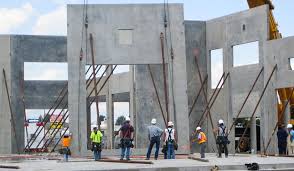 When your contractor develops the project baseline schedule, do they use many Start-to-Start (SS) or Finish-to-Finish (FF) relationships? Do you know?
When your contractor develops the project baseline schedule, do they use many Start-to-Start (SS) or Finish-to-Finish (FF) relationships? Do you know?
A relationship determines how the successor activity will start or finish relative to the predecessor activity. The most common relationship is the Finish-to-Start (FS) relationship. The scheduled finish date for Activity A determines the scheduled start date for activity B. Unless a lag is assigned, this is simple. (See previous post).
However, often the schedule model requires the use of SS and/or FF relationships. If the activities will actually run concurrent and the activities are broken down to the level of detail necessary to plan and manage the work, this is acceptable. If the relationship includes the assignment of a lag, it may still be acceptable but this relationship should be reviewed and agreed to by all parties.
The problem arises when the series of work activities is developed with SS relationships and there are not any successors to the finish of these activities. These are essentially open ended relationships which means the activity could not finish and still not affect the schedule. This may indicate the work is not developed to enough detail to allow Finish-to-Start (FS) relationships to drive the work. Or the addition of work driven by the activity was missed during schedule development. If this work happens to fall on the Longest Path, this path is now driven only by the start of work for each activity, not by the finish of the work for the activity. In time, these relationships may fall on the Longest Path through updates and out-of-sequence work. personally, I prefer to limit the use of SS relationships in general.
Then there are the Finish-to-Finish (FF) relationships. These force the successor’s scheduled finish date to push out to follow the predecessor’s schedule finish date. This is commonly used to close off SS relationships to model concurrent work with the finish dependency. However, often the only successor is the FF relationship. This creates an open finish, which is much like a missing successor. If the predecessor has only the finish of the concurrent activity to drive, and this relationship is a FF relationship, and the successor has no other predecessor. It effectively has no predecessor to the start of this work. If the predecessor activity has only the successor with a FF relationship, what future work does it drive?
Finally, there is the combination of relationships that create reverse logic. Activity A is a FF to Activity B. Activity C is a SS to activity B. The duration of activity B determines when activity C can be scheduled to start. The start of activity B is not driven by any other work. The finish of activity B is driven by the finish of activity A. If the duration for activity B is increased, unless the start of activity C is driven by another predecessor relationship, the start date for activity C is pulled back to schedule an earlier start. This can have unintended consequences for the schedule. We see this often when the schedule is developed using a lot of SS and FF relationships.
We won’t mention the Start-to-Finish (SF) relationship. This is extremely rare. This says that the start of a predecessor cannot start until the finish of the successor. I have only seen it used intentionally and with an acceptable reason twice. And that was to model work on a rolling wave schedule for which there was not much design detail developed. However, this relationship is sometimes used by mistake.
The SS or FF relationship, if used correctly, can allow the schedule to model the plan. It is my opinion that the use of these relationships should be kept to the absolute minimum and be only used to model actual planned concurrent work which is broken down into the level of detail necessary to plan and control the work.
I know many of you can offer additional comments and recommendations. I welcome your comments and input. My goal, as always, is to help our industry and help the projects we support….
I’d love to hear what you think!
Please visit https://conschmanservices.com to learn more about Construction and Schedule Management Services, LLC
Please visit my LinkedIn account to learn more about me.
Please visit my “The Blue Book” ProView.
Paul Epperson CCM, PMP, PSP, PMI-SP
 Once you have the basic
Once you have the basic 
 Do you understand the need to develop specific activity, resource and project calendars? So you put the effort into this process? Do you understand how calendars can help you?
Do you understand the need to develop specific activity, resource and project calendars? So you put the effort into this process? Do you understand how calendars can help you? My early construction schedule experience was gained while working on the owner’s side of the project. The issues I was concerned with were simple. Is the contractor on schedule? Will the contractor finish by contract completion? Have I delayed the contractor, and if so by how much?
My early construction schedule experience was gained while working on the owner’s side of the project. The issues I was concerned with were simple. Is the contractor on schedule? Will the contractor finish by contract completion? Have I delayed the contractor, and if so by how much? As construction scheduling professionals, we’ve all developed project baseline schedules. We’ve also worked with our subcontractors to get their input for the schedule, often with less than stellar results…..
As construction scheduling professionals, we’ve all developed project baseline schedules. We’ve also worked with our subcontractors to get their input for the schedule, often with less than stellar results….. As construction scheduling professionals, we’ve all worked on smaller construction projects which have fallen behind schedule almost immediately after NTP.
As construction scheduling professionals, we’ve all worked on smaller construction projects which have fallen behind schedule almost immediately after NTP. You have created your project’s
You have created your project’s